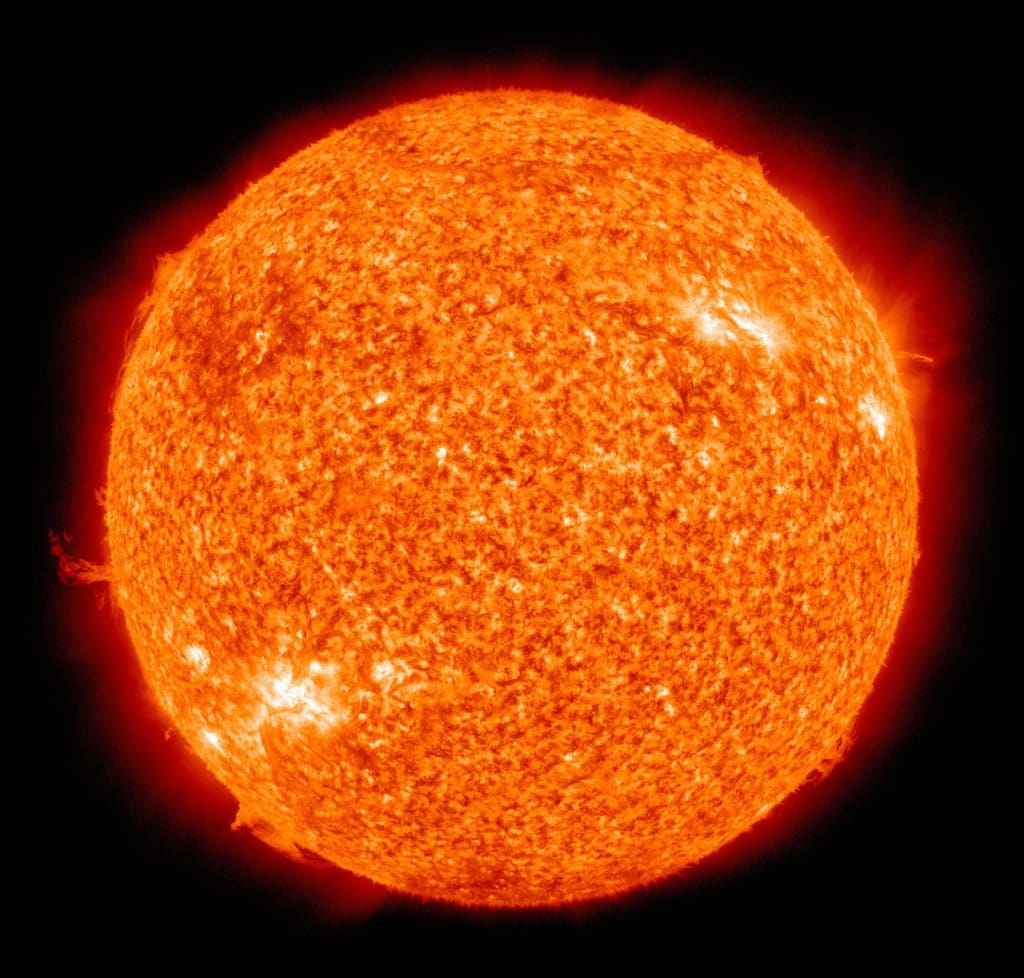"The Power and Beauty of the Sun: Exploring Our Closest Star"
The sun is a vital part of our solar system, providing light, warmth, and energy to all living things on Earth.

The sun is the closest star to Earth and is the center of our solar system. It provides light, warmth, and energy to all living things on Earth, making it an essential part of our daily lives. The sun is a fascinating and complex celestial object, and scientists continue to study it to learn more about its structure and behavior.
Size and Structure
The sun is a massive ball of hot plasma, with a diameter of 1.4 million kilometers, about 109 times larger than the Earth. Its mass is 333,000 times that of the Earth, and it accounts for 99.86% of the total mass of the solar system. The sun's interior consists of several layers, including the core, radiative zone, and convective zone.
The core is the central region of the sun, where nuclear fusion occurs. Hydrogen atoms fuse together to form helium, releasing energy in the process. This energy is carried to the surface of the sun by radiation and convection. The radiative zone is the layer above the core, where energy is transported by radiation. The convective zone is the outermost layer of the sun's interior, where energy is transported by the movement of plasma.
The sun's atmosphere consists of several layers, including the photosphere, chromosphere, and corona. The photosphere is the visible surface of the sun, and it has a temperature of around 5,500 degrees Celsius. The chromosphere is a layer above the photosphere, and it is only visible during a solar eclipse. The corona is the outermost layer of the sun's atmosphere and extends millions of kilometers into space. It is visible during a total solar eclipse as a halo of light around the sun.
Energy and Effects on Earth
The sun is a powerful source of energy, and it radiates this energy in the form of light and heat. The energy from the sun drives the Earth's climate and weather patterns, as well as the growth of plants and the production of food. The sun's energy also powers solar panels, which are used to generate electricity.
However, the sun's energy can also have negative effects on Earth. Solar flares and coronal mass ejections can release high-energy particles and radiation that can damage satellites and disrupt communication systems. They can also cause power outages and pose a risk to astronauts in space. The sun's energy can also cause skin damage and increase the risk of skin cancer.
Observing the Sun
Observing the sun can be a dangerous activity if proper precautions are not taken. Looking at the sun directly can cause permanent eye damage, and it should never be done without proper protective equipment. However, there are several safe ways to observe the sun, such as using solar filters or telescopes equipped with solar filters.
Solar observatories, such as the Solar Dynamics Observatory and the Solar and Heliospheric Observatory, study the sun in detail and provide valuable information about its behavior and activity. Scientists use this information to better understand the sun's structure, magnetic fields, and energy output, and to predict solar activity that may impact Earth.
Conclusion
The sun is a vital part of our solar system, providing light, warmth, and energy to all living things on Earth. It is a complex and fascinating celestial object that scientists continue to study and learn from. While the sun's energy has positive effects, it can also have negative effects, and it is important to take proper precautions when observing it. The sun will continue to be a source of wonder and discovery for many years to come.
About the Creator
Emmanuel Andrew
"I am a blogger and researcher who loves to write content about adventurous experiences and knowledge to share with readers. With a passion for writing and a love of travel, I seek out fascinating new perspectives."






Comments
There are no comments for this story
Be the first to respond and start the conversation.